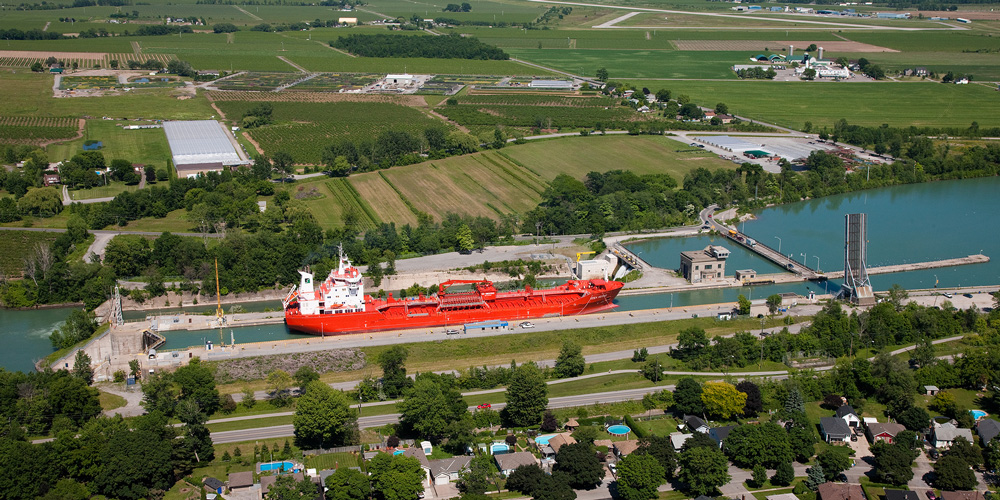Historic Ice Study Completed on the St. Lawrence Seaway
April 7, 2010
The U.S. Department of Transportation’s Saint Lawrence Seaway Development Corporation (SLSDC) together with Transport Canada, the Canadian St. Lawrence Seaway Management Corporation (SLSMC), the U.S. St. Regis Mohawk Tribe, and the Canadian Mohawk Council of Akwesasne have finalized a three-year Joint Observational Study (JOS) that assessed the potential impacts caused by icebreaking activities on the St. Lawrence Seaway.
The study’s conclusion, endorsed by all participants, is that no adverse impacts to the shoreline could be observed as a consequence of ice breaking activity. Using a baseline characterizing the impact of natural ice break-up and clear-out, the study revealed that the use of icebreakers to clear the shipping channel did not result in any measurable change to shoreline ice scour and/or land-fast ice breaking away from the shore.
During the three-year JOS, landowners along the shoreline being studied which extended from the U.S. Snell Lock to the middle of Lake St. Francis did not report any negative effects from the icebreaking activity. Moreover, the JOS revealed that the forces imposed on the shoreline due to icebreaking activities were significantly less than the forces exhibited by ice flows driven onto the shoreline by high wind conditions.
“From the Seaway’s perspective, the JOS is unprecedented in terms of its cooperative nature and the thoroughness of its analysis. After three years of hard work, the Akwesasne Mohawk, the Governments of Canada and the United States, and the U.S. and Canadian Seaway entities all endorse the study’s findings and recommendations.” said U.S. SLSDC Administrator Collister Johnson, Jr. He added, “We will work closely with our Akwesasne neighbors to carry out the study’s recommendations.”
Among the study’s recommendations is that all parties involved in the JOS continue to interact on a regular basis concerning the stewardship of the waterway. In reviewing the findings, Richard Corfe, President and CEO of the Canadian St. Lawrence Seaway Management Corporation emphasized, “The study highlights the importance of a collaborative approach to resolving issues on our shared waterway. With the correct data, informed decisions can be made, and any questions concerning the sustainability of ice management activities can be comfortably settled.”
St. Regis Mohawk Tribal Chief James Ransom also commented on the study, “The Joint Observational Study was an excellent learning process for everyone involved. It shows that if we put our minds together in a cooperative manner, it can be beneficial for all parties involved.” Chief Brian David of the Mohawk Council of Akwesasne added, “We hope that this will be part of an ongoing collaboration to find a harmonious balance between ice-breaking activity and the practice of our inherent rights on the waterways.”
The JOS arose out of a Memorandum of Understanding (MOU) entered into by the parties in May 2006 to observe and document potential physical impacts arising from icebreaking activities in the St. Lawrence Seaway. The MOU was a component of a negotiated settlement among the parties to complaints filed in 2004 by the Akwesasne Mohawk. With the completion of the JOS, the requirements set forth in the settlement agreement are fulfilled.
A copy of the JOS Conclusions and Recommendations can be found at www.greatlakes-seaway.com, under the “Environment” tab. The report is also available at the St. Regis Mohawk Tribe’s website, at www.srmt-nsn.gov.






